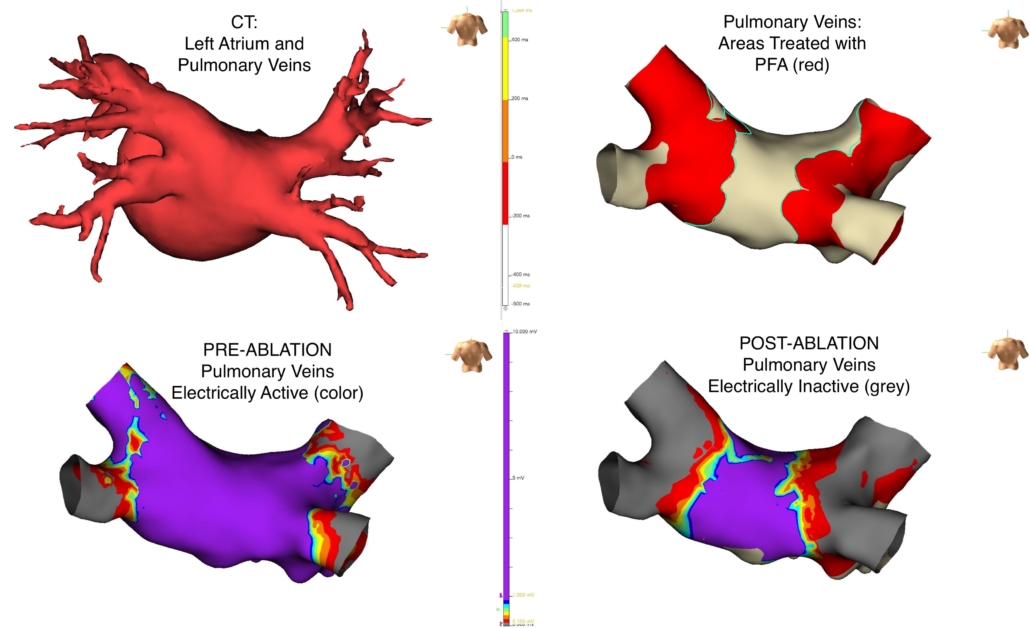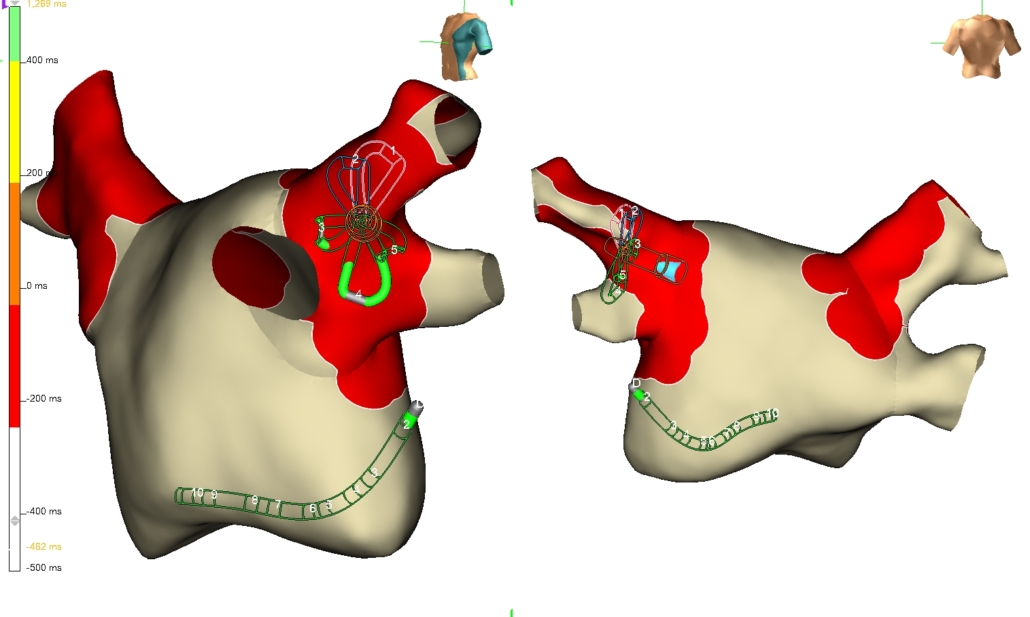Pulsed Field Ablation (PFA)
SB was a 67 year old man who after retiring as a forklift driver suffered from atrial fibrillation (A Fib) for three years. He was having spells of shortness of breath, fatigue, dizziness and nearly passed out a few times. He was eventually diagnosed with A Fib, the most common heart rhythm condition in America. His cardiologist had tried him on at least 3 different medications to get it under control, but SB was having side effects of slow heart rate, fatigue, and erectile dysfunction on these medications. And despite the heart meds he was still having breakthrough episodes of A Fib multiple times a day. He was referred to specialists in A Fib Clinic and then ultimately referred for A Fib ablation, also known as pulmonary vein isolation (PVI).
Pulmonary veins bring blood from the lungs to the heart but electrical impulses like to jump out of these veins to start A fib. This is similar to how a little spark can land on a dry forest bed and start a fire. The point of the ablation procedure is to create a moat around these pulmonary veins so that sparks do not fly out to start A fib in the heart.
SB came to Mercy Hospital and was one of the first patients to have pulsed field ablation (PFA), a new method of ablation to treat A fib that was approved by the FDA in early 2024. After going to sleep with anesthesia his electrophysiologist (heart rhythm specialist) performed the ablation in 1 hour and 40 minutes. Following a period of observation SB was discharged home later that afternoon to rest comfortably in his home.

The risk of major complications using PFA to treat A Fib was about 1% in one large registry of >17,000 patients at 106 centers. These risks include stroke, death, pericardial tamponade (causing a small hole in the heart), coronary artery spasm, heart attack, hemolysis (destruction of red blood cells), and vascular complications. One of the benefits of PFA is that it does not cause any atrioesophageal fistula, phrenic nerve injury, or pulmonary vein stenosis. These are very rare complications of A Fib ablation which can be seen with other ablation modalities in very low numbers.
Electrophysiologists Performing PFA
Learn more about the PFA procedure with this educational video.
The pulsed field ablation catheter uses high-voltage electrical impulses to treat pulmonary veins. This creates an electrical barrier outside the veins so electrical signals cannot enter the heart and trigger atrial fibrillation.


